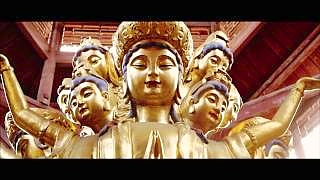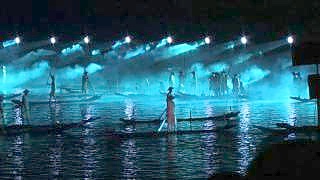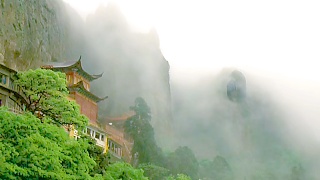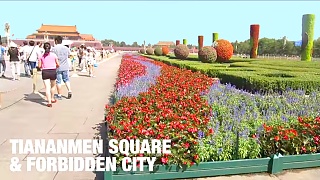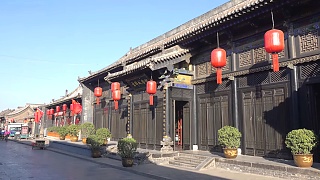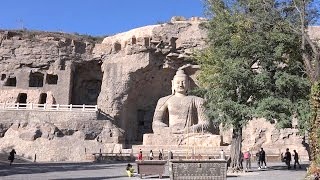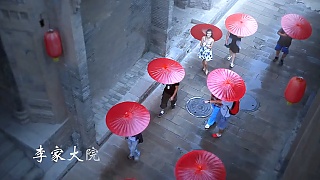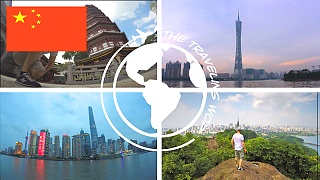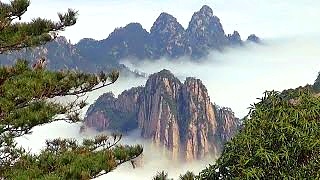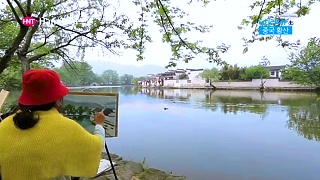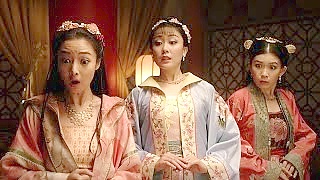Sorry, but the requested resource was not found on this site.
The best, hand-picked video films from across China that cover everything from travel (trip and guide), to Chinese culture (music, language, philosophy, etc., both traditional and contemporary). Most videos are by independent videographers from around the world and encompass a variety of film-making styles. Welcome to your window on China ...
With over 6,000 years of civilisation, combined with an unparalleled embrace of modernity, China is the country most steeped in the philosophies of individual freedom, and of harmony and balance, and still the most exciting place on Earth. Not just a nation state, but a civilisation state. Find out more, with BeijingBuzzz ...
If you were to watch these videos for 8 hours a day, it would take about 60 days to see them all. Which is why we have a video search and tags :)
This is China uncensored - the real China. The very best, hand-picked videos ...
China combines ancient cultural wisdom and architecture with an embrace of modernity and a passion for making life more beautiful. Harmony between human and nature is a core guiding principle; one sees this in the classical Chinese garden (and local park) and the Chinese love for mountains and hiking.
The timeless allure of this unique society is further enhanced by the nuances of 56 ethnic groups and the diverse environments encompassed, from snow-clad moutains to rainforest, to desert, to grassland, to karst peaks and rice terraces, and more.
Whether you're planning a trip or an armchair traveller, doing business with China or an expat, the videos here can help you on life's journey ...
China - not just a country - but a civilization.
Chinese Culture - a selection of vloggers latest posts, with a focus on traditional / countryside arts, crafts, farming and cooking.
China Travel - independent film-makers show the real China.
* Please do support us with a donation if you can - or advertise with us (anything reasonable considered) - it really does help to keep this site alive.
Tag search 搜 ?
Favorite Videos
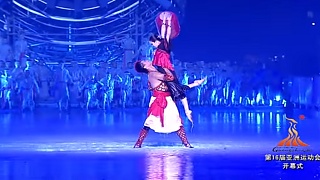
|
A stunning performance from the Opening Gala of the Asian Games 2010 in GuangZhou. GuangZhou has been a major port for over 1,000 years and gateway to the Silk Road of the Sea.
|

|
With MeetWorld ... ShangHai ... BeiJing ... Xi`An ... ChongQing ... ChengDu ... GuangZhou ...
|

|
The amazing panoply of sights and sounds that is the incredibly diverse and both naturally and culturally beautiful country that makes it a travel destination top pick. With Cee-Roo ...
|

|
With Little Chinese Everywhere ... Bonus film - with A German In China ...
|
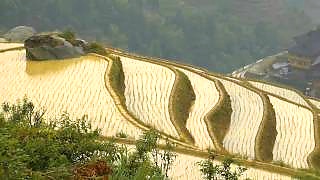
|
Two films by ryzdon - LongSheng (Dragon`s Backbone) Rice Terraces, GuangXi province, and LeShan Giant Buddha, Mount Emei Scenic Area, SiChuan province ...
|

|
|
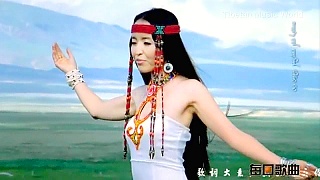
|
QingHai province The group is called HAYA, together with singer DaiQing Tana, and the song is in both mandarin and mongolian. The song is based on a QingHai folk tune. Beautiful in every way ...
|
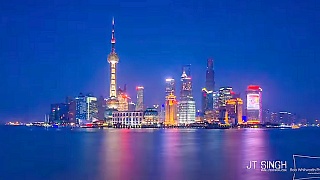
|
Sweeping scenes ...
|
City Guides
Get Ready For China
|
In 2019, the 145-million inbound tourists. Many visitors return again and again. Here`s why. With Chron Ten ...
|
|
With Nation Nibbles ... With BRIGHT SIDE ...
|
Latest Videos

|
With Ben Norton ...
|

|
With Lisa and Josh...
|

|
With Barrett ...
|

|
With No Idea But Here ...
|

|
With Mike & Ashley ...
|

|
With Mike & Ashley ...
|

|
With Barrett ...
|

|
With Sons & Eri ...
|

|
With Max and Jacqueline ...
|

|
|

|
With Sammy and Tommy ...
|

|
With Two Drifters ...
|
Sponsored Videos
Your video could be here.
Sponsored videos: Special offer - only USD $150 for one month; $350 for 3 months; $990 for a whole year. Can be hosted by us, by you, YouTube or Vimeo. Plus text and link. Contact advertising@embed-videos.com
BeiJing 北京 and TianJin 天津 videos
BeiJing city, the capital of China, lies with BeiJing municiality, like a small province. BeiJing has many UNESCO World Heritage Sites including the Forbidden City, Summer Palace, Temple of Heaven and sections of the Great Wall of China. However, a rich architectural and cultural heritage is combined with many modern features. With two huge international airports, BeiJing is well connected with the world and a popular tourist destination.

|
With Walk For You ...
|
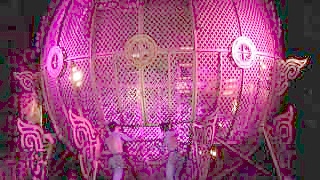
|
Some scenes from the performance ...
|
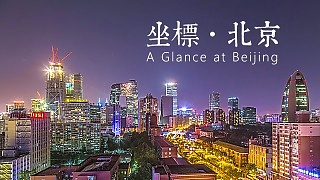
|
|

|
|

|
ZhangJiaJie 张家界 (HuNan) and HuaShan 华山 (ShaanXi) ... XingPing 兴平 and the Li River 漓江 (GuangXi) ... Xi`An 西安 (ShaanXi) and BeiJing 北京 ... LuoYang 洛阳 (HeNan) and PingYao 平遥 (ShanXi) ...
|
ShangHai 上海 videos
ShangHai is known for dynamism, style, and its international, modern aspects, yet has historical features too, such as the famous Bund along the HuangPu River, with its colonial era architecture. On the other side of the river lies the futuristic looking PuDong district which has quickly made ShangHai a leading financial center. Yet the city also has many traditional places too, such as the beautiful YuYuan Garden, Jade Buddha Temple and ZhuJiaJiao water town.

|
BeiJing, Xi`An and ShangHai. A feature-length film. With Dennis Hurd ...
|
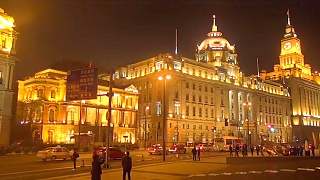
|
By a foreign exchange student. Excellent cinematography. Filmed in 2012 - 2013 ...
|

|
With RealSamanthaBrown ... Bonus film, with Ken Abroad ...
|

|
With Walk East ...
|

|
|

|
With Tim Chambers ... By boat : By e-bike / bicycle :
|
GuangDong 广东 : GuangZhou, ShenZhen videos

|
The contrast with the West, that has no ambition and is merely focused on retaining its empires, is stark. With Lee Barrett in GuangZhou ...
|

|
The first lifestyle shopping park in China. Don`t miss it. With Walk For You ... SanLiTun evening walk, BeiJing ... The UniWalk mall in ShenZhen ...
|

|
With Time Walker ... Bonus films - with Rafa Goes Around! ... With Nico ...
|
YunNan 云南 : LiJiang, DaLi, Tiger Leaping Gorge videos

|
With Mark Wiens ...
|

|
With DianXi XiaoGe ...
|

|
With Flora and Note ...
|
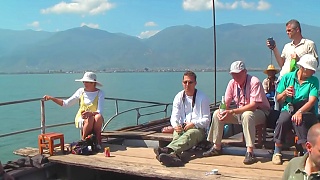
|
In October 2008. Places visited include Green Lake Park in KunMing, the Stone Forest at ShiLin, and DaLi old town.
|

|
With DuckTravel ...
|
SiChuan 四川 & ChongQing 重庆 : ChengDu, EmeiShan, JiuZhaiGou, LeShan videos

|
With Ride With Gabi ...
|
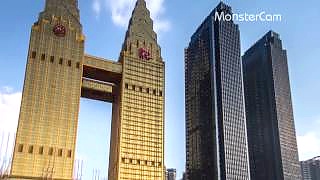
|

|
With Uliana`s stories ...
|

|
GuangXi 广西 & GuiZhou 贵州 : GuiLin, YangShuo, HuangGuoShu videos

|
With Wild Girl 野小妹 ... Bonus films - on mulberries ... On tomatoes ... On citrus fruits (mandarins) ... On loquat ...
|
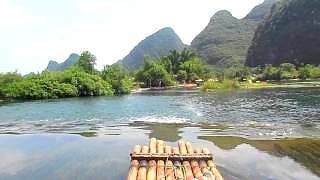
|
Near YangShuo, GuangXi province.
|
ZheJiang 浙江 : HangZhou, NingBo, WuZhen videos
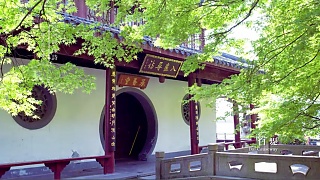
|
Hángzhōu lies in ZheJiang province
|
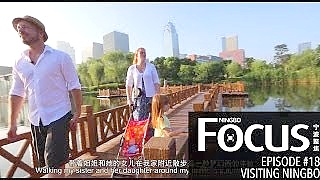
|
ZheJiang province, east China, south of ShangHai. Every Chinese city has its unique flavor, but in many ways, this is the New China AnyTown ...
|
JiangSu 江苏 : SuZhou, NanJing, ZhouZhuang videos
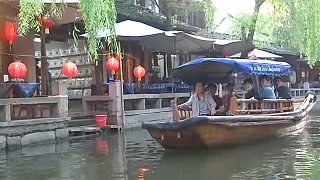
|
ZhouZhuang, part of the area that Marco Polo described as the `Venice of the East`, lies just 37 miles west of Shanghai (about an hour`s drive) ...
|
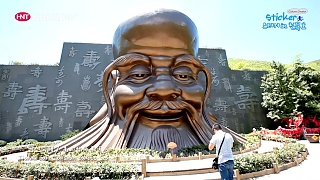
|
Including TianMu Lake 天目湖 ...
|
ShaanXi 陕西 : Xi'An, Terracotta Warriors, HuaShan videos
ShanXi 山西 : PingYao, YunGang Grottoes, WuTaiShan mountain videos
HaiNan 海南 : SanYa, HaiKou videos

|
With Walk East ...
|
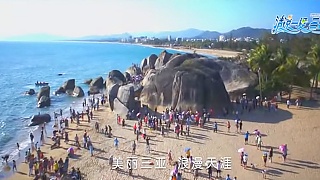
|
The most southerly part of China, HaiNan is warm all year with a more or less tropical climate.
|
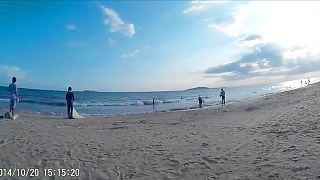
|
HeBei 河北 & ShanDong 山东 : QingDao, ShanHaiGuan, TaiShan videos

|
With Walk East ... With KimberleyExploring ... With DuckTravel ...
|

|
A forest park / nature reserve ...
|

|
With Walk East ...
|
GanSu 甘肃 and NingXia 宁夏 : JiaYuGuan, DunHuang, YinChuan videos

|
GanSu province. With Walk East ...
|
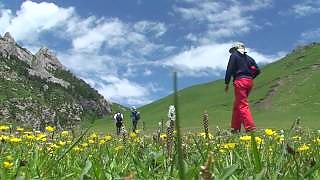
|
Highlights of an eight week trip though Tibet, YunNan, SiChuan, GanSu and QingHai provinces (2007).
|
HuNan 湖南 and HuBei 湖北 : WuLingYuan, ZhangJiaJie, FengHuang videos
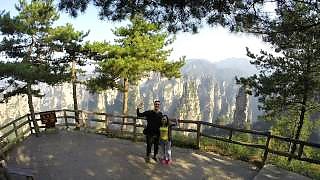
|

|
HuNan province. With Walk East ...
|
AnHui 安徽 : HuangShan, HongCun videos

|
With Walk East ...
|
JiangXi 江西 and FuJian 福建 : XiaMen, WuYiShan, JingDeZhen videos
HeNan 河南 : ShaoLin Temple, LongMen Grottoes, ZhengZhou videos

|
Explore the local sights and dishes with four lively Chinese girls from Singapore ...
|

|
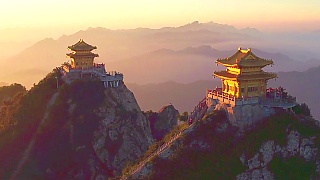
|
A Taoist mountain near LuoYang. Includes a large statue of LaoZi, author of the Dao De Jing. Not to be confused with LaoJunShan in YunNan.
|
West China : Tibet 西藏, QingHai 青海, XinJiang 新疆 videos
North China : LiaoNing 辽宁, HeiLongJiang 黑龙江, JiLin 吉林, Inner Mongolia 内蒙古 videos

|
Music and dance videos
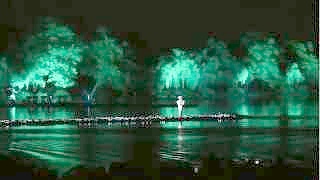
|
The beautiful outdoor show in HangZhou, ZheJiang province ...
|

|
Soaring Dragons, Leaping Tigers ... The Spring Festival Gala highlights (2024) ... Bonus film - drums and ice at the Great Wall - from the BeiJing Winter Olympics ...
|

|
A KunQu Opera performance at the World Horticultural Exposition, BeiJing, 2019 ...
|
Food videos

|

|
Art, architecture and crafts videos
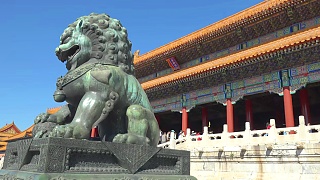
|
See the architectural marvel that is the Palace Museum in the heart of the blue sky city of BeiJing ...
|

|
Awesome craftsmanship ... Bonus film - a beautiful wood bowl ... And - pack basket plus hot, sweet and sour potato noodles ...
|

|
With CN Walking ...
|
Movie videos

|
An awesome romantic comedy movie for Valentine`s Day. Four couples with love, life and romance. Filmed in China (BeiJing and ShenZhen) and Italy (Rome, Matera). Directed by Liu Jiang ... Trailer ...
|

|
China is a vast and diverse country with a rich history, stunning landscapes, vibrant culture, and bustling cities. Here's a comprehensive travel overview for visitors:
Historical and Cultural Highlights:
The Great Wall of China: One of the most iconic landmarks in the world, the Great Wall stretches over thousands of kilometers and offers breathtaking views of the surrounding countryside.
Forbidden City (Palace Museum), Beijing: This ancient imperial palace complex is a UNESCO World Heritage Site, offering a glimpse into China's imperial past with its grand halls, courtyards, and gardens.
Terracotta Army, Xi'an: Discovered in the 1970s, the Terracotta Army is a collection of thousands of life-sized clay soldiers, horses, and chariots buried with the first Emperor of China, Qin Shi Huang.
The Bund, Shanghai: This waterfront promenade along the Huangpu River is lined with historic buildings, modern skyscrapers, and offers stunning views of the city skyline.
Potala Palace, Lhasa: Located in Tibet, the Potala Palace is a symbol of Tibetan Buddhism and the former residence of the Dalai Lama. It's renowned for its stunning architecture, intricate artwork, and sacred relics.
Natural Wonders:
Yangshuo and Guilin: Famous for their picturesque karst landscapes, these regions offer stunning scenery with limestone peaks, crystal-clear rivers, and traditional villages.
Zhangjiajie National Forest Park: Known for its towering sandstone pillars, this UNESCO World Heritage Site served as inspiration for the floating mountains in the movie "Avatar."
Jiuzhaigou Valley: A UNESCO World Heritage Site, Jiuzhaigou is famous for its colorful lakes, waterfalls, and snow-capped peaks, offering breathtaking natural beauty year-round.
Modern Marvels:
Infrastructure: China has the best high-speed rail network, subway systems and road system.
Shanghai Tower: This skyscraper in Shanghai is one of the tallest buildings in the world and offers panoramic views of the city from its observation deck.
Beijing Olympic Park: Visit the site of the 2008 Summer Olympics, including the iconic Bird's Nest Stadium and the Water Cube, now repurposed as a water park.
Culinary Delights:
Peking Duck: A famous dish from Beijing, Peking Duck features crispy duck skin served with thin pancakes, spring onions, and hoisin sauce.
Dim Sum: Originating from Guangdong province, dim sum consists of bite-sized portions of various dishes served in bamboo steamers, such as dumplings, buns, and rolls.
Practical Tips:
Visa: Most visitors to China require a visa. Make sure to check the visa requirements for your country before traveling.
Transportation: China has an extensive transportation network, including high-speed trains, domestic flights, buses, and subways. Apps like WeChat and DiDi are useful for navigating cities and ordering taxis.
Language: Mandarin Chinese is the official language, but English is not widely spoken outside of major cities and tourist areas. It's helpful to learn a few basic phrases or carry a translation app.
Currency: The currency in China is the Chinese Yuan (CNY or RMB). Credit/debit cards are widely accepted in urban areas, and at ATMs, but it is advisable to carry cash for smaller purchases and in rural areas. For longer visits, consider AliPay or WeChat for mobile payments.
China offers a wealth of experiences for visitors, from ancient wonders and cultural treasures to modern marvels and culinary delights. Whether you're exploring historic landmarks, immersing yourself in natural beauty, or savoring the diverse cuisine, China has something to offer travelers of all interests.
Accommodation Options:
Hotels: China offers a wide range of hotels to suit every budget, from luxury international chains to budget-friendly options and boutique accommodations. Major cities like Beijing, Shanghai, and Guangzhou have numerous hotel options catering to different preferences.
Hostels: Hostels are a popular choice for budget travelers, especially in cities with a thriving backpacker scene like Beijing, Xi'an, and Chengdu. They offer affordable dormitory beds as well as private rooms and often provide communal spaces for socializing.
Guesthouses and Homestays: In rural areas and smaller towns, guesthouses and homestays provide an opportunity to experience local culture and hospitality. These accommodations range from simple rooms in family homes to cozy guesthouses in scenic locations.
Flights to and within China:
International Flights:
Major Airports: China is served by several major international airports, with the busiest ones being Beijing Capital International Airport (PEK), Shanghai Pudong International Airport (PVG), and Guangzhou Baiyun International Airport (CAN).
Airlines: Numerous international airlines operate flights to China from destinations around the world. Major carriers include Air China, China Eastern Airlines, China Southern Airlines, Cathay Pacific, Singapore Airlines, and Emirates, among others.
Popular Routes: Popular international routes to China include flights from major hubs such as London, New York, Los Angeles, Tokyo, Seoul, Singapore, and Sydney.
Visa Requirements: Visitors from many countries require a visa to enter China. It's important to check visa requirements and obtain the necessary documentation well in advance of your trip.
Domestic Flights:
Domestic Airlines: China has a well-developed domestic air travel network, with several airlines offering flights to destinations across the country. Major domestic carriers include Air China, China Eastern Airlines, China Southern Airlines, Hainan Airlines, and Spring Airlines.
Popular Domestic Routes: Popular domestic routes connect major cities such as Beijing, Shanghai, Guangzhou, Chengdu, and Xi'an. Flights between these cities are frequent and relatively affordable, making air travel a convenient option for exploring different regions of China.
High-Speed Trains vs. Flights: In addition to domestic flights, China has an extensive high-speed train network that connects major cities. When planning your travel within China, consider factors such as travel time, cost, and convenience when choosing between flights and trains.
Booking Flights: Flights within China can be booked directly through airline websites, online travel agencies, or through travel agents. It's advisable to book tickets in advance, especially during peak travel seasons and holidays.
Practical Tips:
Baggage Allowance: Check the baggage allowance and any restrictions imposed by the airline you're flying with, especially if you plan to travel with oversized luggage or sports equipment.
Airport Transportation: Major airports in China are well-connected to city centers by airport shuttle buses, taxis, and in some cities, metro lines. It's advisable to research transportation options in advance to ensure a smooth journey to and from the airport.
Flight Delays and Cancellations: Flight delays and cancellations can occur, especially during inclement weather or peak travel periods. Stay informed about your flight status and be prepared for potential changes to your travel plans.
By considering these factors and planning accordingly, you can make the most of your flight experience when traveling to and within China.
Why people love to visit China:
For a multitude of reasons, ranging from its rich history and culture to its breathtaking natural landscapes and delicious cuisine. Here are ten reasons why China is a popular destination for travelers:
Rich History and Culture: China boasts a civilization that dates back thousands of years, with a wealth of historical sites such as the Great Wall, the Forbidden City, and the Terracotta Army. Visitors can explore ancient temples, palaces, and traditional villages, gaining insight into China's fascinating history and culture.
Great Wall of China: One of the most iconic landmarks in the world, the Great Wall of China stretches thousands of kilometers across northern China. Visitors can hike along its majestic ramparts, marvel at its breathtaking views, and learn about its significance in Chinese history.
Modern Cities: China is home to dynamic and modern cities such as Beijing, Shanghai, and Hong Kong, where visitors can experience the pulse of contemporary China. From towering skyscrapers and bustling markets to vibrant nightlife and cutting-edge technology, these cities offer a glimpse into China's rapid development.
Scenic Landscapes: From the towering peaks of the Himalayas to the picturesque karst mountains of Guilin, China boasts an incredibly diverse range of landscapes. Visitors can explore stunning natural wonders such as the Yellow Mountains, Zhangjiajie National Forest Park, and Jiuzhaigou Valley, each offering its own unique beauty.
Culinary Delights: Chinese cuisine is renowned worldwide for its variety, flavor, and complexity. Whether it's dim sum in Guangzhou, Peking duck in Beijing, or hot pot in Sichuan, visitors can indulge in a diverse array of mouthwatering dishes that reflect the country's regional diversity and culinary heritage.
Traditional Arts and Performances: China has a rich tradition of performing arts, including Peking opera, Chinese acrobatics, and traditional music and dance. Visitors can attend performances at theaters and cultural venues across the country, experiencing the beauty and grace of these ancient art forms.
Shopping and Markets: China is a shopper's paradise, with bustling markets, modern malls, and vibrant street stalls offering everything from silk scarves and antiques to electronics and souvenirs. Visitors can haggle for bargains at markets such as Beijing's Silk Street, Shanghai's Yu Garden, and Guangzhou's Shangxiajiu Pedestrian Street.
Tea Culture: Tea plays an integral role in Chinese culture, and visitors can immerse themselves in the country's rich tea traditions. From the tea plantations of Hangzhou's Longjing Village to the tea houses of Chengdu's People's Park, travelers can sample a wide variety of teas and learn about the art of tea brewing and appreciation.
Festivals and Celebrations: China celebrates a variety of traditional festivals throughout the year, offering visitors the opportunity to experience the country's vibrant cultural heritage. From the colorful lantern festivals of Chinese New Year to the dragon boat races of the Dragon Boat Festival, these celebrations showcase China's rich customs and traditions.
Hospitality and Warmth of the People: Chinese people are known for their hospitality and warmth towards visitors. Whether it's sharing a meal with a local family, chatting with vendors at a street market, or receiving a warm welcome at a traditional guesthouse, travelers to China often appreciate the friendliness and kindness of the people they meet.
These are just a few reasons why people love to visit China. With its blend of ancient traditions and modern innovations, breathtaking landscapes, and diverse cultural experiences, China offers something for every type of traveler to enjoy.
But it doesn't stop there! Here are some additional reasons why people love to visit China:
Incredible Architectural Marvels: China is home to some of the world's most impressive architectural wonders, including the ancient city walls of Xi'an, the modern skyscrapers of Shanghai's Pudong district, and the futuristic Bird's Nest stadium in Beijing. Visitors can marvel at these engineering feats and witness the country's architectural evolution.
Panda Conservation: As the home of the giant panda, China offers opportunities for visitors to see these adorable creatures up close. Panda reserves such as the Chengdu Research Base of Giant Panda Breeding and the Wolong National Nature Reserve allow visitors to observe pandas in their natural habitat and learn about conservation efforts.
Traditional Chinese Medicine: China has a long history of traditional medicine, including acupuncture, herbal remedies, and tai chi. Visitors can explore traditional medicine markets, visit herbal medicine shops, and even experience treatments such as acupuncture and massage at specialized clinics.
Cultural Festivals: In addition to traditional festivals, China also hosts a variety of cultural events and celebrations throughout the year. These may include folk music and dance performances, art exhibitions, and international film festivals, providing visitors with opportunities to immerse themselves in Chinese culture.
Martial Arts: China is the birthplace of martial arts, and visitors can learn about various styles such as kung fu, tai chi, and qigong. Many martial arts schools across the country offer classes and workshops for visitors of all skill levels, allowing them to experience the discipline and philosophy behind these ancient practices.
Ancient Silk Road: China played a central role in the ancient Silk Road trade route, which connected East and West. Visitors can explore historic Silk Road cities such as Xi'an, Dunhuang, and Kashgar, where they can see well-preserved artifacts, visit ancient ruins, and learn about the exchange of goods and ideas that shaped civilizations.
Ethnic Diversity: China is home to 56 recognized ethnic groups, each with its own unique culture, language, and traditions. Visitors can explore ethnic minority regions such as Tibet, Xinjiang, and Yunnan, where they can experience traditional festivals, sample local cuisine, and learn about the customs and lifestyles of these diverse communities.
Natural Hot Springs: China has a wealth of natural hot springs scattered across the country, offering visitors a relaxing and rejuvenating experience. From luxurious spa resorts to rustic outdoor pools, there are hot spring destinations to suit every preference, providing a tranquil escape from the hustle and bustle of city life.
Dynamic Nightlife: China's major cities come alive at night with vibrant nightlife scenes, including bustling night markets, trendy bars and clubs, and colorful street food stalls. Visitors can experience the excitement of cities like Shanghai, Beijing, and Guangzhou after dark, exploring neon-lit streets and enjoying live music and entertainment.
Ease of Travel: With modern infrastructure, efficient transportation networks, and increasing tourism services, traveling in China has become more accessible and convenient for visitors from around the world. Whether by high-speed train, domestic flights, or well-developed road networks, getting around China is relatively easy, allowing visitors to explore its diverse attractions with ease.
These additional reasons highlight the depth and variety of experiences that await travelers in China, making it a truly captivating destination for exploration and discovery.
UNESCO World Heritage sites:
China is home to a significant number of UNESCO World Heritage sites, each offering unique cultural, historical, and natural significance. Here are some of the most notable UNESCO World Heritage sites in China:
The Great Wall: This iconic symbol of China is one of the most famous UNESCO World Heritage sites in the world. Stretching over 21,000 kilometers across northern China, the Great Wall is a remarkable feat of ancient engineering and a testament to China's rich history.
The Forbidden City, Beijing: Also known as the Imperial Palace, the Forbidden City is a vast complex of palaces, courtyards, and gardens that served as the imperial palace of the Ming and Qing dynasties. It is one of the best-preserved examples of traditional Chinese architecture and a UNESCO World Heritage site since 1987.
The Terracotta Army, Xi'an: Discovered in 1974, the Terracotta Army is a collection of thousands of life-sized terracotta sculptures depicting the armies of Qin Shi Huang, the first Emperor of China. This archaeological marvel is considered one of the greatest discoveries of the 20th century and has been a UNESCO World Heritage site since 1987.
The Mogao Caves, Dunhuang: Located along the ancient Silk Road, the Mogao Caves are a complex of Buddhist cave temples containing exquisite murals, sculptures, and artifacts spanning over a thousand years of Buddhist art. Designated as a UNESCO World Heritage site in 1987, the caves are considered one of the most important repositories of Buddhist art in the world.
The Potala Palace, Lhasa: Perched atop Marpo Ri hill in Lhasa, Tibet, the Potala Palace is a majestic fortress-like complex that served as the winter residence of the Dalai Lama. With its stunning architecture, intricate artwork, and religious significance, the Potala Palace was designated as a UNESCO World Heritage site in 1994.
The Summer Palace, Beijing: Built in the Qing dynasty as a royal retreat, the Summer Palace is a vast imperial garden complex featuring pavilions, temples, bridges, and a large artificial lake. It is renowned for its harmonious blend of natural beauty and architectural splendor and has been a UNESCO World Heritage site since 1998.
Mount Tai, Shandong Province: Mount Tai, also known as Taishan, is one of China's Five Great Mountains and has been a place of worship and pilgrimage for over 3,000 years. Designated as a UNESCO World Heritage site in 1987, Mount Tai is revered for its cultural, religious, and natural significance.
The Classical Gardens of Suzhou: Suzhou is famous for its exquisite classical gardens, which are masterpieces of Chinese garden design dating back to the 11th century. These gardens feature intricate landscaping, pavilions, water features, and rockeries, and have been designated as a UNESCO World Heritage site since 1997.
The Old Town of Lijiang, Yunnan Province: Lijiang's old town is a well-preserved example of a traditional Han Chinese city, with narrow cobblestone streets, wooden buildings, and traditional Naxi architecture. Designated as a UNESCO World Heritage site in 1997, the old town of Lijiang offers visitors a glimpse into China's rich cultural heritage.
The Fujian Tulou: Fujian Tulou are traditional earthen dwellings built by the Hakka and Minnan people in the mountainous regions of Fujian province. These unique communal residences are characterized by their circular or rectangular shapes and thick rammed-earth walls. Designated as a UNESCO World Heritage site in 2008, the Fujian Tulou are a testament to traditional Chinese architectural ingenuity and communal living.
These UNESCO World Heritage sites represent the rich cultural, historical, and natural heritage of China and are must-visit destinations for travelers seeking to explore the country's diverse and fascinating attractions.
Chinese culture
Chinese culture is one of the world's oldest and most influential, spanning thousands of years of history and encompassing diverse traditions, customs, beliefs, and practices. Here are some key aspects of Chinese culture:
Confucianism, Taoism, and Buddhism: These philosophical and religious traditions have profoundly influenced Chinese culture. Confucianism emphasizes moral values, social harmony, and filial piety, while Taoism promotes living in harmony with the Tao (the Way) and achieving balance in life. Buddhism, introduced to China from India, has also played a significant role in shaping Chinese spirituality and culture.
Family and Filial Piety: Family is highly valued in Chinese culture, and filial piety, the respect and obedience towards one's parents and elders, is a core virtue. Family gatherings, especially during festivals like Chinese New Year, are important occasions for strengthening familial bonds.
Language and Calligraphy: The Chinese language, with its intricate characters, is central to Chinese culture. Calligraphy, the art of writing Chinese characters with brush and ink, is not only a practical skill but also a revered form of artistic expression.
Cuisine: Chinese cuisine is celebrated worldwide for its diversity, flavors, and regional variations. Each of China's provinces boasts its own culinary specialties, influenced by factors such as geography, climate, and cultural heritage. Popular dishes include dumplings, noodles, Peking duck, and Sichuan hotpot.
Arts and Crafts: Chinese culture has a rich tradition of arts and crafts, including painting, pottery, porcelain, silk weaving, embroidery, and paper cutting. Traditional Chinese painting, often featuring landscapes, flowers, and birds, emphasizes harmony, balance, and simplicity.
Festivals and Celebrations: Chinese festivals are vibrant and colorful celebrations that reflect the country's cultural diversity and heritage. The most important festival is Chinese New Year (also known as the Spring Festival), which marks the beginning of the lunar new year and is celebrated with fireworks, dragon and lion dances, family reunions, and feasting.
Traditional Medicine and Martial Arts: Traditional Chinese medicine, including acupuncture, herbal remedies, and qigong (breathing exercises), is deeply rooted in Chinese culture and philosophy. Similarly, martial arts such as Tai Chi and Kung Fu are not just physical disciplines but also embody principles of health, spirituality, and self-defense.
Cultural Symbols: Chinese culture is rich in symbolism, with certain objects and motifs carrying specific meanings. For example, the dragon symbolizes power, strength, and good fortune, while the phoenix represents beauty, grace, and prosperity.
Overall, Chinese culture is characterized by its richness, diversity, and enduring traditions, which continue to shape the lives of people both within China and around the world.
Ancient Philosophy and Literature: Chinese culture has a deep tradition of philosophy and literature dating back thousands of years. Classic texts such as the "I Ching" (Book of Changes), "Dao De Jing" (Tao Te Ching), and the works of Confucius have had a profound impact not only in China but also on global thought.
Performing Arts: Traditional Chinese performing arts include various forms of opera, such as Peking Opera, Cantonese Opera, and Kunqu Opera, each characterized by elaborate costumes, stylized gestures, and unique vocal techniques. Traditional Chinese music, with instruments like the guzheng (zither), pipa (lute), and erhu (two-stringed fiddle), also holds a special place in Chinese culture.
Tea Culture: Tea holds significant cultural importance in China, where it is not only a popular beverage but also a symbol of hospitality, etiquette, and social harmony. Traditional tea ceremonies, such as the Gongfu tea ceremony, emphasize mindfulness, respect for nature, and the art of brewing and enjoying tea.
Lunar Calendar and Festivities: The Chinese lunar calendar, which is based on the cycles of the moon, is used to determine traditional holidays and festivals. Besides Chinese New Year, other important celebrations include the Lantern Festival, Qingming Festival (Tomb-Sweeping Day), Dragon Boat Festival, Mid-Autumn Festival (Mooncake Festival), and Double Ninth Festival.
Etiquette and Social Norms: Chinese culture places great emphasis on etiquette and social propriety. Concepts such as "saving face" (maintaining dignity and reputation), hierarchical relationships, and the importance of indirect communication are deeply ingrained in Chinese society.
Education and Scholarly Tradition: Education has always been highly valued in Chinese culture, and the pursuit of knowledge and scholarship is esteemed. The imperial examination system, which dates back to ancient times, was a rigorous system for selecting government officials based on their literary and intellectual abilities.
Modern Cultural Influences: In addition to its rich traditional heritage, Chinese culture continues to evolve and adapt to modern influences. The rapid development of technology, media, and globalization has led to the emergence of new cultural phenomena, trends, and forms of expression, contributing to China's dynamic cultural landscape.
These aspects, among others, contribute to the richness and complexity of Chinese culture, reflecting a civilization with a long history of innovation, creativity, and resilience.
China's geography
China is known for its diverse geography. Here are some key points about China's geography:
Size and Shape: China is the fourth largest country in the world by land area, covering approximately 9.6 million square kilometers. It stretches from the eastern coast of the Pacific Ocean to the western border with various Central Asian countries.
Mountains: China is characterized by several major mountain ranges, including the Himalayas in the southwest, the Tian Shan in the northwest, and the Kunlun Mountains in the west. Mount Everest, the world's highest peak, is located on the China-Nepal border.
Plateaus: The Tibetan Plateau, often referred to as the "Roof of the World," is located in southwestern China. It is the highest and largest plateau on Earth, with an average elevation exceeding 4,500 meters (14,800 feet).
Rivers: China is home to several major rivers, including the Yangtze (Chang Jiang), Yellow River (Huang He), Pearl River (Zhu Jiang), and Mekong River. These rivers play a significant role in China's agriculture, transportation, and economy.
Deserts: The Gobi Desert is situated in northern China, while the Taklamakan Desert is located in the northwest. These deserts are important geographical features, influencing weather patterns and serving as barriers to human movement.
Plains and Coastal Regions: China has extensive low-lying areas, particularly along its eastern and southeastern coasts. These regions are highly populated and are centers of economic activity, including major cities like Beijing, Shanghai, and Guangzhou.
Climate: China's climate varies widely due to its large size and diverse geography. The country experiences a range of climatic conditions, from arid and semi-arid climates in the northwest to humid subtropical climates in the southeast.
China's infrastructure
China's infrastructure is among the most extensive and rapidly developing in the world, reflecting the country's economic growth and urbanization. The Chinese government has made significant investments in transportation, energy, telecommunications, and other sectors to support economic development, improve living standards, and enhance connectivity both domestically and internationally. Here's an overview of China's infrastructure:
Transportation: High-Speed Rail (HSR): China boasts the world's largest high-speed rail network, with thousands of kilometers of track connecting major cities across the country. High-speed trains, capable of reaching speeds of up to 350 km/h (217 mph), offer a fast, efficient, and comfortable mode of transportation for millions of passengers daily.
Expressways and Highways: China has an extensive network of expressways and highways, facilitating the movement of goods and people across the country. Major highways like the Beijing-Shanghai Expressway and the Guangzhou-Shenzhen Expressway link key economic regions and urban centers.
Urban Transport: China's cities are served by modern urban transport systems, including subway/metro systems, buses, and taxis. Major cities like Beijing, Shanghai, and Shenzhen have extensive subway networks that provide convenient and affordable transportation for residents and visitors.
Ports and Shipping: China has some of the world's busiest and most advanced ports, including Shanghai, Ningbo-Zhoushan, and Shenzhen. These ports play a critical role in global trade, handling massive volumes of containerized cargo and facilitating maritime transportation along China's coast and international shipping routes.
Aviation: China has seen rapid growth in its aviation sector, with major airports in cities like Beijing, Shanghai, and Guangzhou serving as key hubs for domestic and international air travel. The country has also invested in the expansion and modernization of airports to accommodate increasing passenger numbers and air cargo traffic.
Energy and Utilities: Power Generation: China is the world's largest producer and consumer of electricity, with a diverse mix of energy sources including coal, hydroelectric, nuclear, wind, and solar power. The country has invested heavily in expanding its power generation capacity to meet growing demand and reduce reliance on fossil fuels.
Renewable Energy: China leads the world in renewable energy investment and deployment, with ambitious targets for expanding renewable energy capacity. The country is a global leader in wind and solar power, with vast wind farms and solar photovoltaic installations contributing to its clean energy transition.
Water Infrastructure: China has invested in the construction of dams, reservoirs, and water diversion projects to manage water resources, mitigate flooding, and provide water for irrigation, industry, and urban areas. Notable projects include the Three Gorges Dam on the Yangtze River and the South-to-North Water Diversion Project.
Telecommunications and Information Technology: Telecommunications: China has a vast and rapidly growing telecommunications network, with widespread coverage of mobile phone and internet services. Major telecom operators like China Mobile, China Unicom, and China Telecom provide voice, data, and internet services to millions of users across the country.
Internet Infrastructure: China is home to one of the world's largest and most active internet user populations. The country has invested in the development of internet infrastructure, including broadband networks, data centers, and internet exchange points, to support the rapid growth of online services, e-commerce, and digital innovation.
Urban Development: Smart Cities: China is investing in the development of smart cities, leveraging technology and data to improve urban management, infrastructure efficiency, and quality of life for residents. Pilot projects and initiatives are underway in cities like Hangzhou, Shenzhen, and Chengdu to deploy smart transportation, energy, and public services.
Urban Planning and Construction: China's rapid urbanization has led to the construction of new cities, residential developments, and infrastructure projects. Urban planning and construction efforts aim to create sustainable, livable cities with modern amenities, green spaces, and efficient transportation systems.
Challenges and Future Directions: While China's infrastructure has made impressive strides in recent decades, the country still faces challenges such as environmental sustainability, infrastructure quality and safety, and equitable access to services. The Chinese government continues to prioritize infrastructure development as a key driver of economic growth and social development, with ongoing investments in upgrading and expanding transportation networks, energy systems, and urban infrastructure. As China's economy evolves and urbanization continues, infrastructure development will remain a critical focus area for ensuring sustainable and inclusive growth in the years to come.









